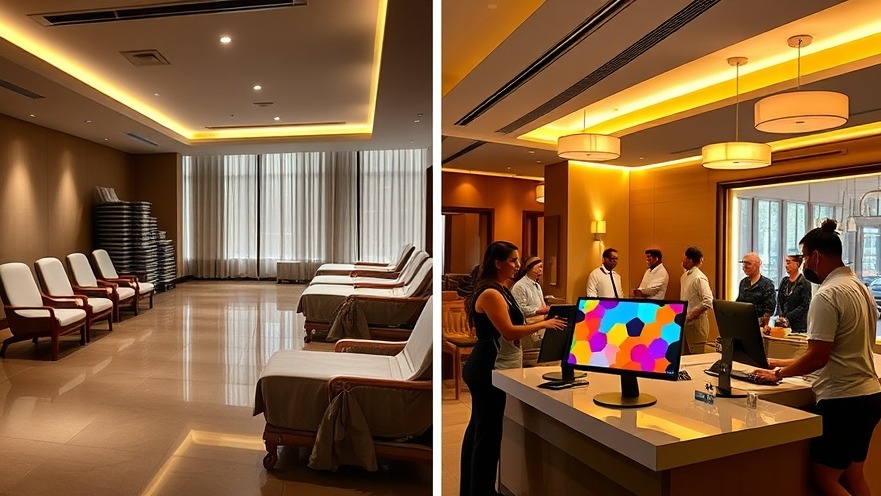
A Calm Front, Busy Backstage
Step into a spa and the world slows down — soothing music, hints of lavender, and guests slipping into relaxation.
But behind that peaceful curtain, leaders are juggling spreadsheets, payroll, and the never-ending question: where should we spend, and where should we save?
The industry is thriving. In 2024 alone, U.S. spas brought in a record $22.5 billion. Visits rose, spending per guest climbed, and wellness demand is surging.
Yet growth doesn’t erase pressure. Rising labor costs, inflation, and razor-thin margins mean spa directors must constantly decide when bold investments will pay off — and when restraint will protect the bottom line.
Industry educator Lisa Starr frames it simply: “Every hour on your schedule is inventory you can never get back. The question isn’t just what you charge — it’s how wisely you use those hours.”
The Business Behind the Serenity
Spas have evolved from occasional luxuries to everyday essentials in the $6.3 trillion global wellness economy. Guests now view self-care as part of their lifestyle, not just a splurge.
But running a spa is unlike managing most businesses. Capacity is finite. You only have so many treatment rooms, so many therapist hours, so many opportunities to generate revenue.
“A spa isn’t unlimited,” says consultant Trent Munday. “Treat those hours like gold.”
Industry data backs him up: nearly 22,000 U.S. spas operate today, employing over 376,000 professionals. With competition growing, the operators who balance financial discipline with creative growth strategies stand out.

From Crisis to Creativity
Every industry has its turning points, and for spas, the last few years brought several.
The pandemic shutdowns forced spas to think beyond in-person treatments, launching memberships and digital programs just to stay connected.
Dynamic pricing emerged, borrowed from hotels and airlines, allowing spas to charge more at peak times and fill slower hours with incentives.
Technology platforms like Zenoti, Vagaro, and Book4Time made real-time KPIs visible — no more guessing whether payroll was eating margins or retail capture was lagging.
And then came inflation, which tested every owner’s instincts. Some cut back across the board — and regretted it later when marketing visibility and staff morale slipped. Others turned to zero-based budgeting, asking hard questions: Does this expense serve the guest or the team? If not, why keep it?
Strategies That Separate the Survivors from the Thrivers
What are the practices that give certain spas an edge?
One is revenue optimization. Leaders no longer look only at revenue totals. They study RevPATH (revenue per available treatment hour), utilization, and retail capture. If hours are booked, but profits are flat, it’s a signal something deeper is off.
Another is dynamic pricing, which can be as simple as charging a little more on Saturdays or offering shorter treatments on weekday afternoons.
“Yield management is the quickest, easiest lever to increase spa revenue,” says Starr. “It doesn’t require more rooms — just smarter use of the ones you already have.”
Then there’s marketing discipline. Harvard Business Review studies show businesses that keep marketing active during downturns gain market share when the economy rebounds.
For spas, that might mean targeted digital ads, loyalty emails, or building a strong local SEO presence.
Finally, zero-based cost reviews help leaders trim without harming the guest experience. Instead of “cut 10% everywhere,” they ask: What adds value to our clients and staff?
The rest is fair game for savings — which can then be reinvested into training, experience upgrades, or retention programs.

What Sets the Leaders Apart
If there’s one trait that defines high-performing spas, it’s their ability to marry financial clarity with guest trust.
They design memberships that build recurring revenue without relying on steep discounts.
They implement transparent pricing, so even with dynamic rates, guests feel respected.
They create cultures where therapists are valued with training, wellness support, and fair pay.
Beth McGroarty from the Global Wellness Institute sums it up well: “The most successful operators invest where wellness is heading, not just where it’s been.” That might mean exploring teen wellness programs, embracing analog spa rituals that counter digital fatigue, or expanding recovery-focused services.
Straightforward Takeaways for Spa Leaders
Running a spa will never be simple, but clear frameworks can make decisions less overwhelming. Consider these steps:
Audit costs quarterly. Make a “keep vs. cut” chart to evaluate every line item.
Experiment with dynamic pricing. Start with weekends vs. weekdays before rolling out system-wide.
Design memberships carefully. Build on real margins, not deep discounts that erode profits.
Track RevPATH weekly. Think of it as your spa’s blood pressure — if it’s off, something needs adjusting.
Keep marketing alive. Even a leaner budget can keep your spa visible when others go quiet.
Reinvest savings strategically. Staff training, loyalty programs, and digital convenience upgrades usually pay off.

The Final Word: Courage Meets Discipline
Healthy decision-making for spa growth isn’t about spending freely or cutting harshly. It’s about balance. It’s about the courage to invest when the numbers support it, and the discipline to trim where value isn’t being created.
As Starr puts it, “Every decision we make behind the scenes should ultimately create a better experience for the guest in the room.”
The global wellness economy is projected to soar to nearly $9 trillion by 2028. The spas that thrive won’t be the ones chasing every trend or slashing every expense.
They’ll be the ones that apply courage, clarity, and consistency — investing wisely, cutting carefully, and never losing sight of why they exist: to help guests feel whole, nurtured, and renewed.
Because when leadership gets that balance right, the payoff is bigger than profit. Guests exhale a little deeper. Staff feel valued. And the spa itself becomes not just a business, but a sanctuary built to last.
 Add Row
Add Row  Add
Add 




Write A Comment